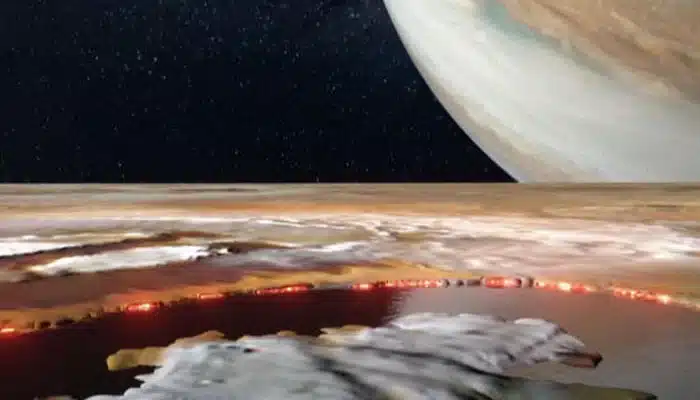The Juno mission by Nasa has captured infrared images of lava lakes present on the surface of Jupiter’s moon Io, which show hot rings of the eruption surrounding a cooler crust.
The rings have been found to be bright white with a thermal signature between 450 and 1,350 degrees Fahrenheit that is 232 and 732 degrees Celsius. Parallel to this, the rest of the lake is much cooler and measures at some minus 45 degrees Fahrenheit or minus 43 degrees Celsius, reported Space.
“We now have an idea of what is the most frequent type of volcanism on Io: enormous lakes of lava where magma goes up and down,” Alessandro Mura, who is a Juno co-investigator from the National Institute for Astrophysics in Rome, said in a statement.
“The lava crust is forced to break against the walls of the lake, forming the typical lava ring seen in Hawaiian lava lakes,” he added.
Notably, the prime hypothesis features that magma undergoes upwelling in these lava lakes. This causes the lakes to rise and fall. Moreover, the lava is also exposed along the edge of the lake, when the crust touches the lake’s walls which are possible to be hundreds of metres tall.
On the other hand, there is also a secondary hypothesis. It implies that magma wells up in the middle of the lake. This pushes the crust outward until it sinks along the edge of the lake. In this way, it again exposes the lava and forms those lava rings.

